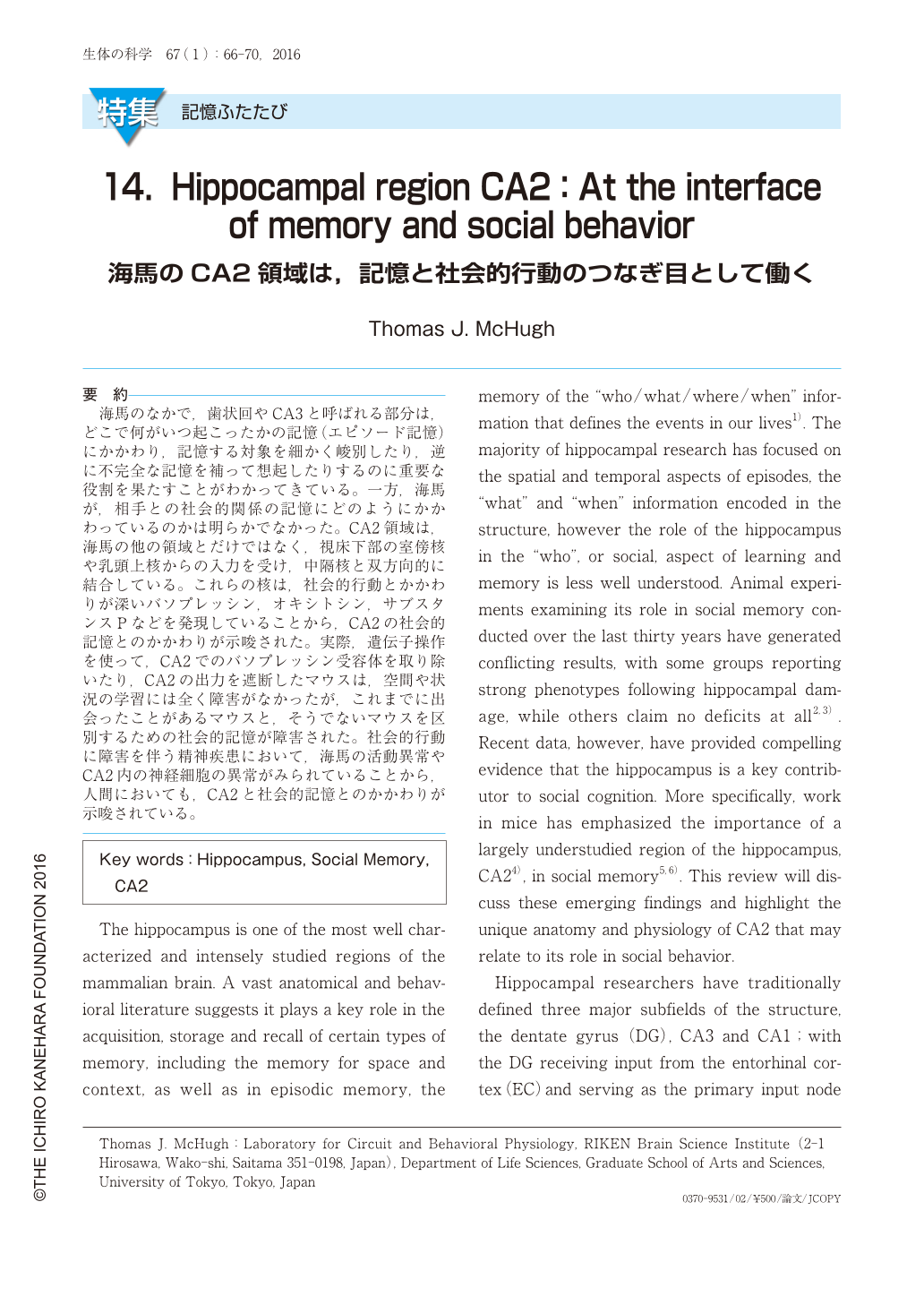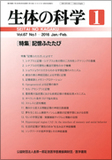Japanese
English
- 有料閲覧
- Abstract 文献概要
- 1ページ目 Look Inside
- 参考文献 Reference
海馬のなかで,歯状回やCA3と呼ばれる部分は,どこで何がいつ起こったかの記憶(エピソード記憶)にかかわり,記憶する対象を細かく峻別したり,逆に不完全な記憶を補って想起したりするのに重要な役割を果たすことがわかってきている。一方,海馬が,相手との社会的関係の記憶にどのようにかかわっているのかは明らかでなかった。CA2領域は,海馬の他の領域とだけではなく,視床下部の室傍核や乳頭上核からの入力を受け,中隔核と双方向的に結合している。これらの核は,社会的行動とかかわりが深いバソプレッシン,オキシトシン,サブスタンスPなどを発現していることから,CA2の社会的記憶とのかかわりが示唆された。実際,遺伝子操作を使って,CA2でのバソプレッシン受容体を取り除いたり,CA2の出力を遮断したマウスは,空間や状況の学習には全く障害がなかったが,これまでに出会ったことがあるマウスと,そうでないマウスを区別するための社会的記憶が障害された。社会的行動に障害を伴う精神疾患において,海馬の活動異常やCA2内の神経細胞の異常がみられていることから,人間においても,CA2と社会的記憶とのかかわりが示唆されている。
The hippocampus is one of the most well characterized and intensely studied regions of the mammalian brain. A vast anatomical and behavioral literature suggests it plays a key role in the acquisition, storage and recall of certain types of memory, including the memory for space and context, as well as in episodic memory, the memory of the “who/what/where/when” information that defines the events in our lives1). The majority of hippocampal research has focused on the spatial and temporal aspects of episodes, the “what” and “when” information encoded in the structure, however the role of the hippocampus in the “who”, or social, aspect of learning and memory is less well understood. Animal experiments examining its role in social memory conducted over the last thirty years have generated conflicting results, with some groups reporting strong phenotypes following hippocampal damage, while others claim no deficits at all2, 3). Recent data, however, have provided compelling evidence that the hippocampus is a key contributor to social cognition. More specifically, work in mice has emphasized the importance of a largely understudied region of the hippocampus, CA24), in social memory5, 6). This review will discuss these emerging findings and highlight the unique anatomy and physiology of CA2 that may relate to its role in social behavior.
Hippocampal researchers have traditionally defined three major subfields of the structure, the dentate gyrus (DG), CA3 and CA1;with the DG receiving input from the entorhinal cortex (EC) and serving as the primary input node output, sending information back to the EC via the subiculum. Data from both rodents and humans has helped assign different aspects of memory processing to specific hippocampal subfields;the dentate gyrus (DG) has been implicated in distinguishing similar contexts or episodes, via its synaptic plasticity, sparse activity, high cell number, and adult-born neurons, whereas CA3 has been implicated in the rapid storage of information, ensuring accurate retrieval when recall cues are incomplete7-10) (Figure 1A). Despite this remarkable progress in dissecting the hippocampal circuit, the small, yet distinct, collection of pyramidal cells between the CA3 and CA1 fields, termed CA2, has largely been ignored.

Copyright © 2016, THE ICHIRO KANEHARA FOUNDATION. All rights reserved.


